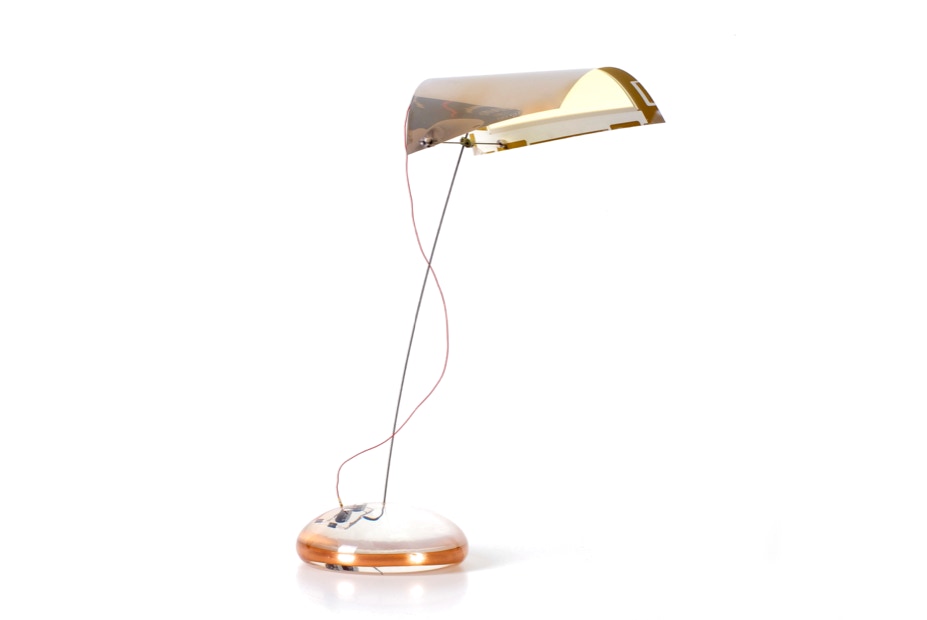Wireless Lamp
for Universal Display Corporation
2012
Background
UDC had been experimenting with flexible metal substrates, as opposed to rigid glass, for years. After developing the 6 inch glass-based lighting panels, we set our sights on creating a 6 inch flexible metal-foil lighting panel.
Design Brief
An exploration in extreme minimalism, create a lamp for the thinnest, lightest lighting panel yet fabricated. Since the panel was not expected to produce a useful amount of light, this would be more of a sculptural object than a functional lamp.
Process
At every step of development was the question, what could be done away with? I found that by introducing a slight curve to the panel it could be made self-supporting, only requiring a thin wire at one end to hold it in tension. I then experimented with various thicknesses of spring steel, finding one that would hold the panel upright without collapsing. This would also become one of the electrodes to power the panel. For the other electrode I chose a thin red wire, an ode to Ingo Maurer's Lucellino lamps.
There was a lot of buzz regarding wireless power in the tech industry at this time, so I decided to see if I could create this lamp without a power cord. The energy requirements were low enough that it seemed possible. I worked with a technician on our team to create a simple decoupled transformer that would power the panel as long as the receiving antenna was directly above the transmitter.
This lamp was being developed around the same time as the Dome Lamp, and in keeping with the minimalist brief, I exposed the electronics by casting them in the clear acrylic we used for the Dome Lamp's dome. In prototyping we even used the same mold. This completed the lamp by giving it a weighted base, and the dome provided a nice surface to grip and slide the lamp around.
Resolution
Since the lamp only received power when placed directly above the transmitter, I also did away with a power switch. The lamp would only illuminate when placed in the proper location, then slowly fade and turn off the further it was moved away. I created a more refined mold for the base, mimicking the shape of a water droplet on a hydrophobic surface.
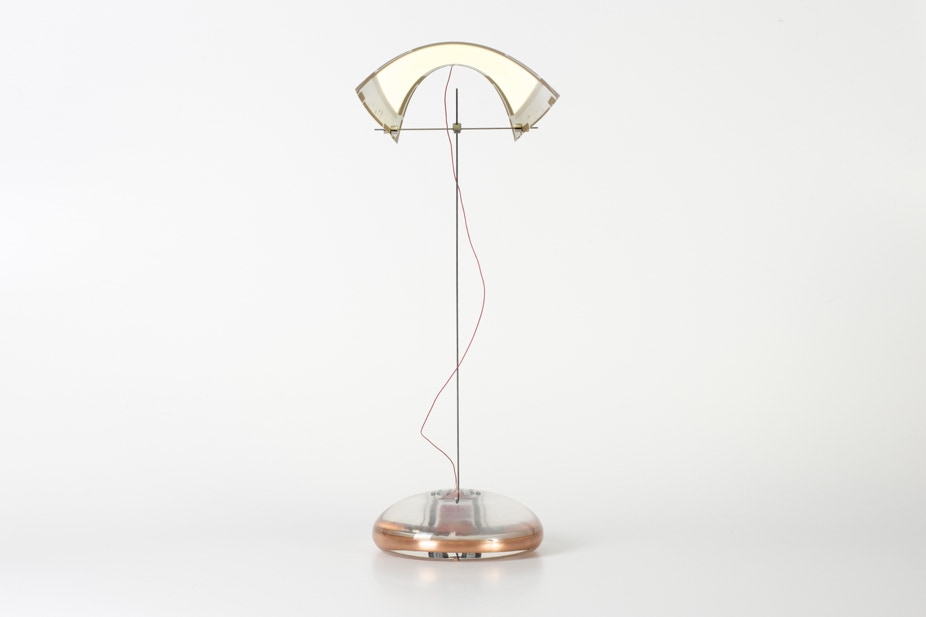
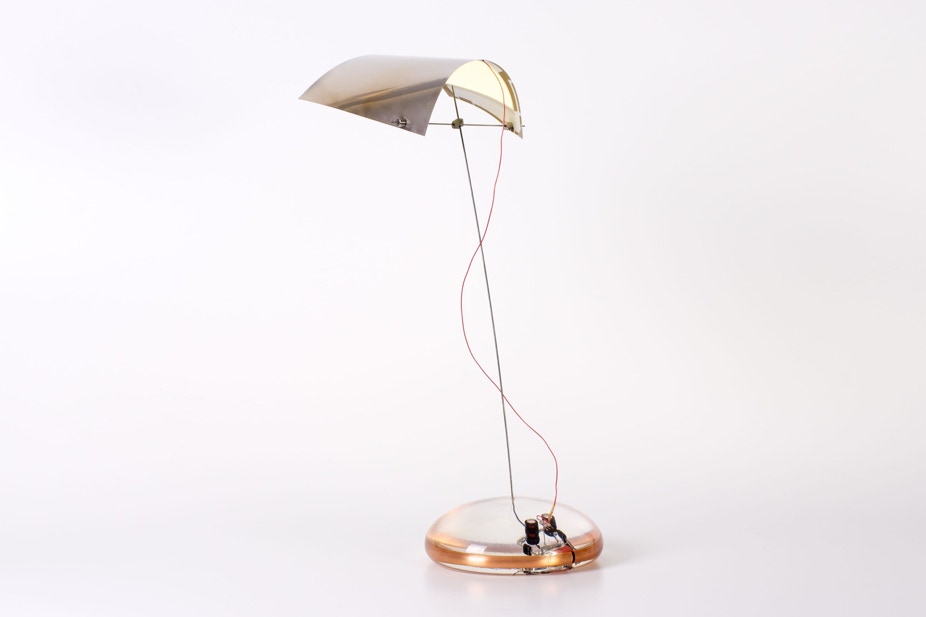
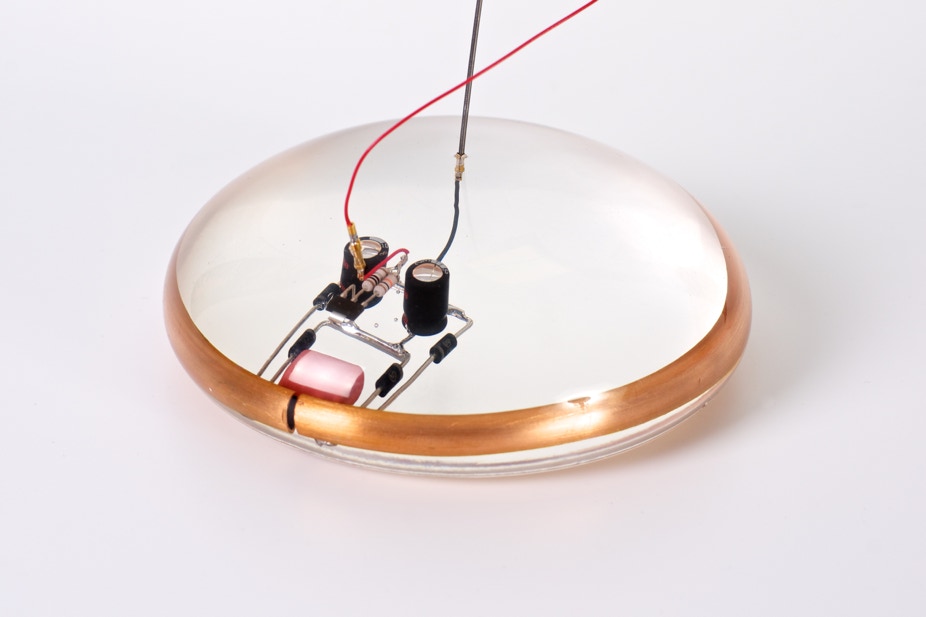
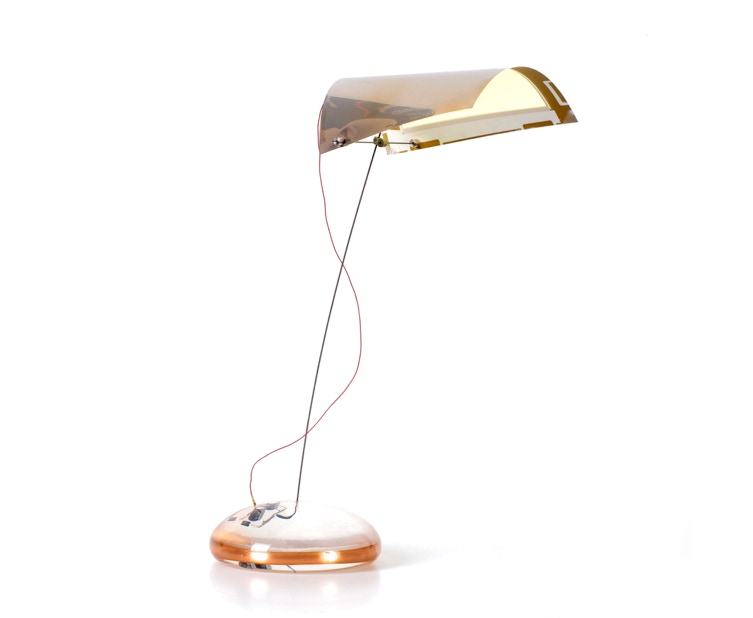
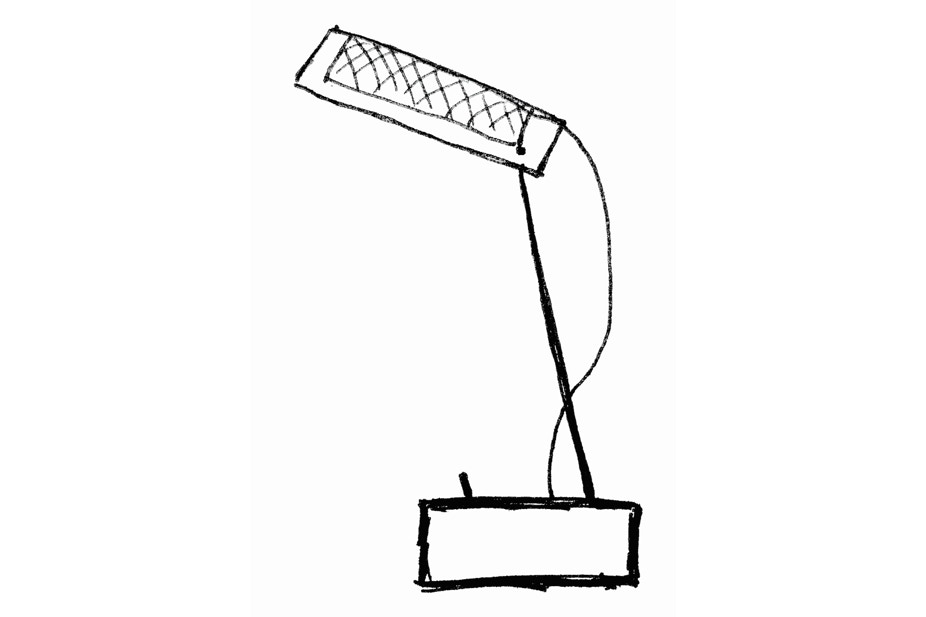
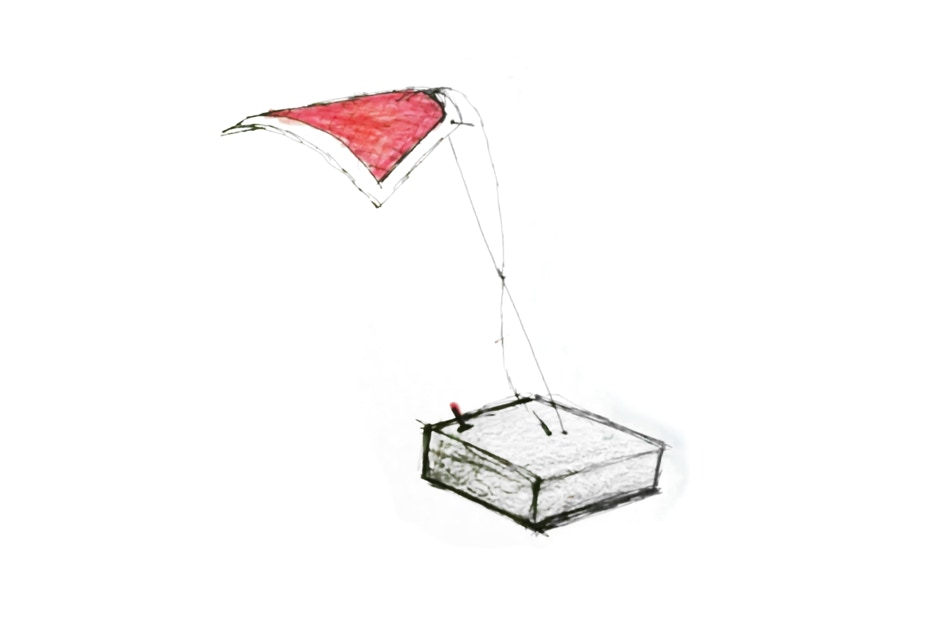
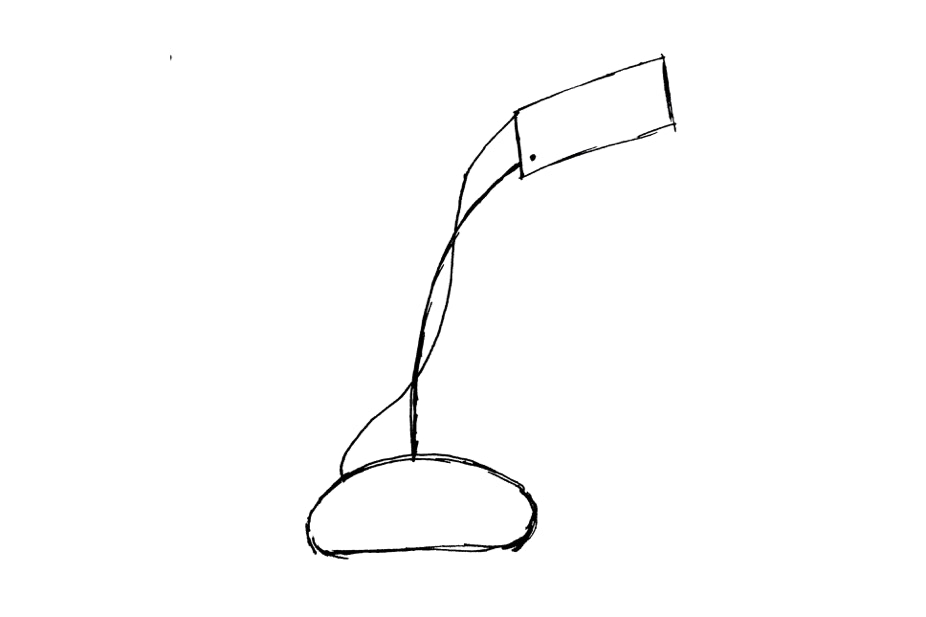
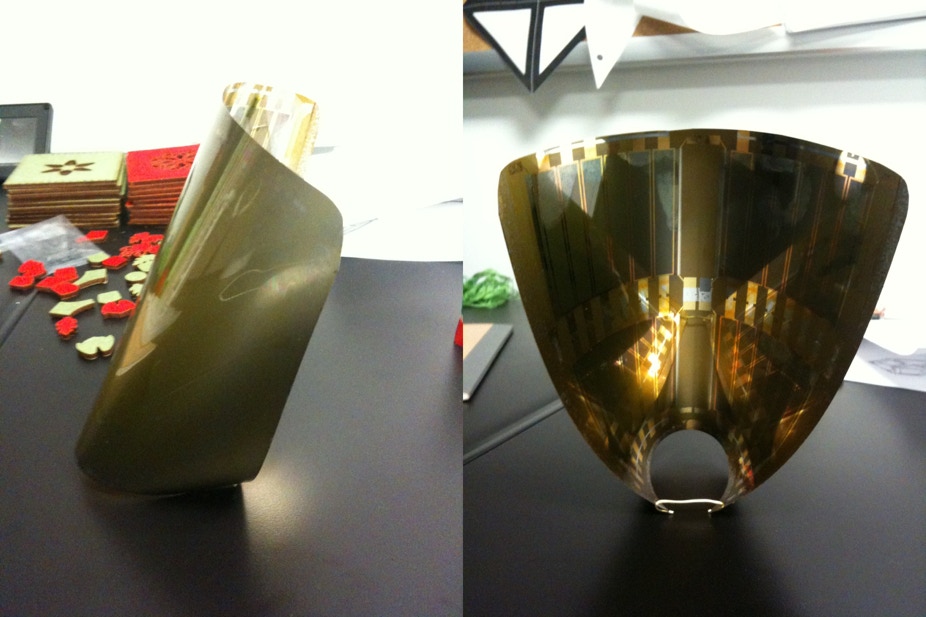
Curved Panel Test
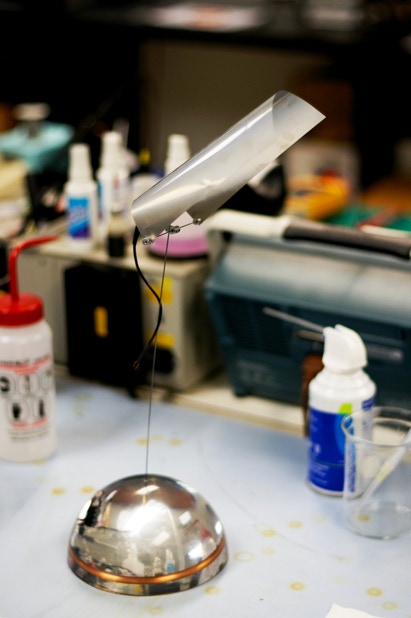
Prototype Using Dome Lamp Mold
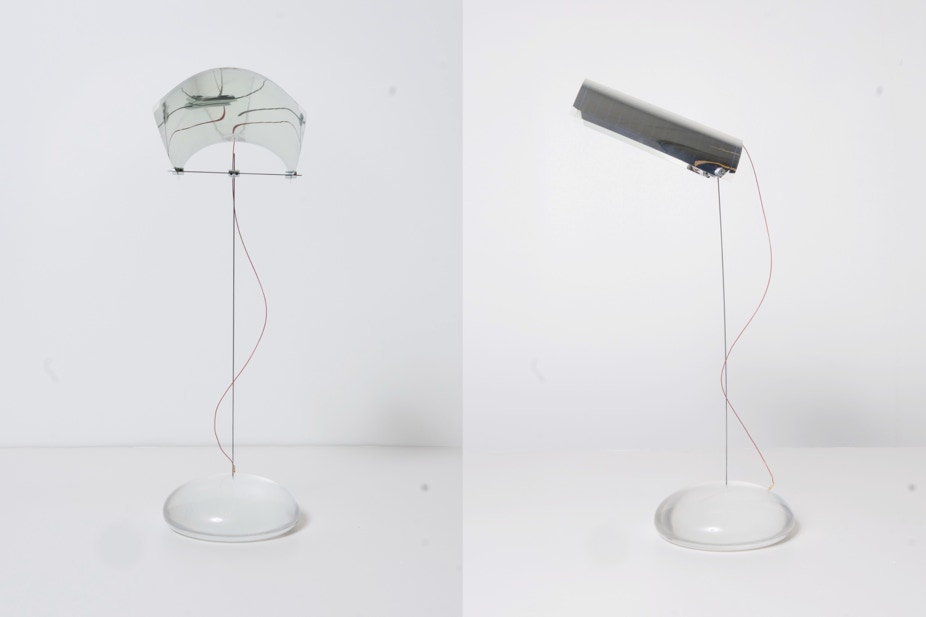
Study Model
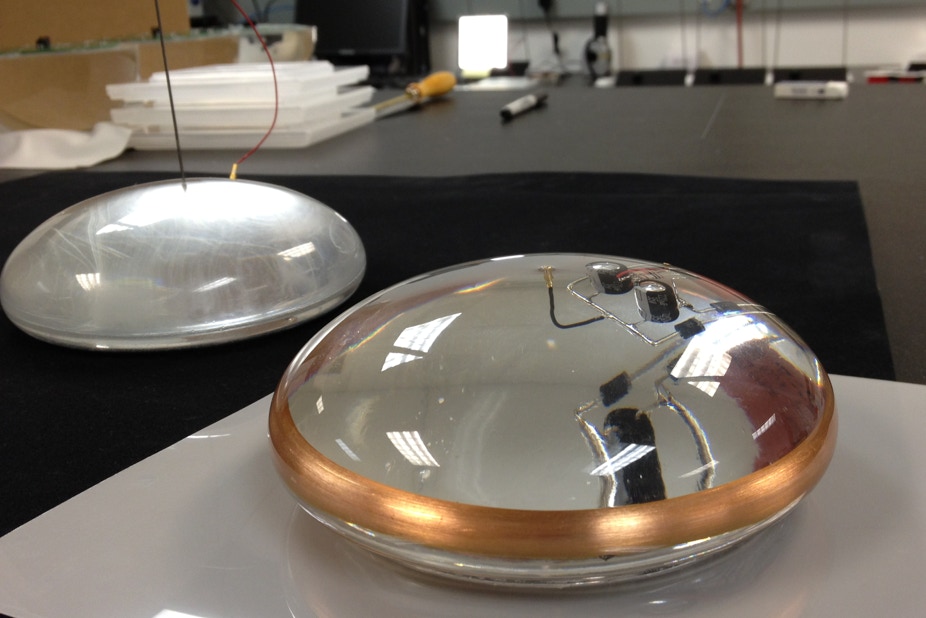
Final Base
